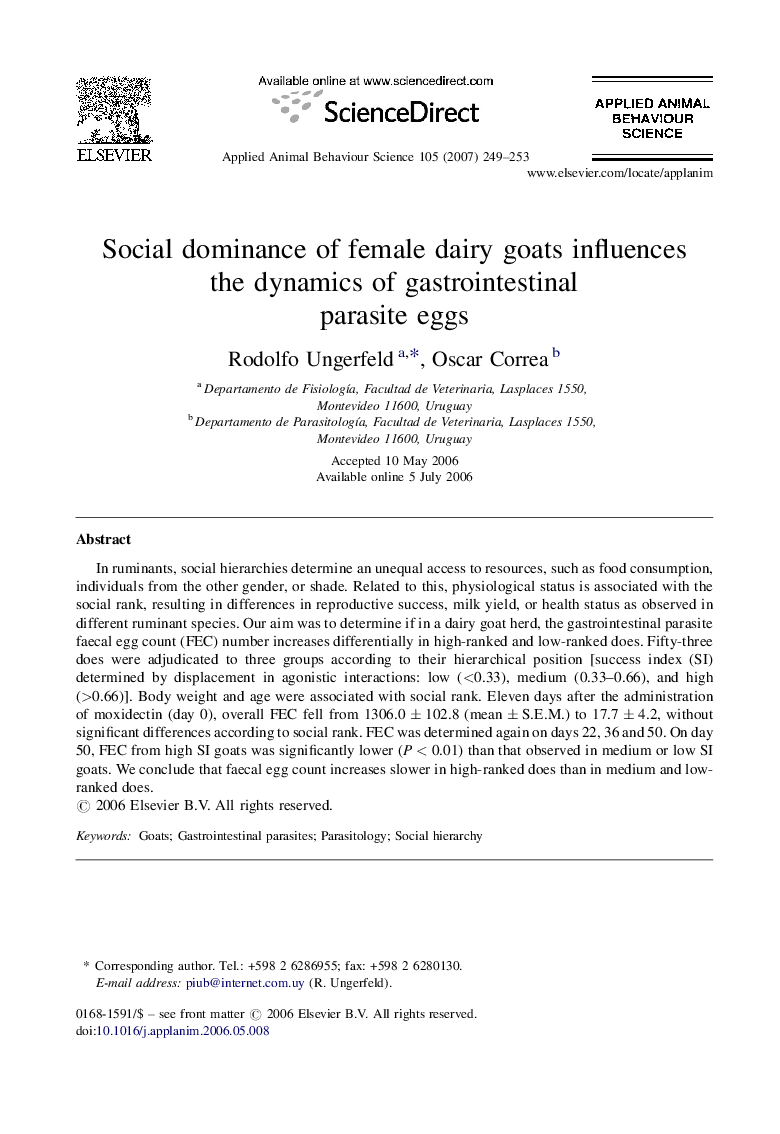| Article ID | Journal | Published Year | Pages | File Type |
|---|---|---|---|---|
| 4524010 | Applied Animal Behaviour Science | 2007 | 5 Pages |
In ruminants, social hierarchies determine an unequal access to resources, such as food consumption, individuals from the other gender, or shade. Related to this, physiological status is associated with the social rank, resulting in differences in reproductive success, milk yield, or health status as observed in different ruminant species. Our aim was to determine if in a dairy goat herd, the gastrointestinal parasite faecal egg count (FEC) number increases differentially in high-ranked and low-ranked does. Fifty-three does were adjudicated to three groups according to their hierarchical position [success index (SI) determined by displacement in agonistic interactions: low (<0.33), medium (0.33–0.66), and high (>0.66)]. Body weight and age were associated with social rank. Eleven days after the administration of moxidectin (day 0), overall FEC fell from 1306.0 ± 102.8 (mean ± S.E.M.) to 17.7 ± 4.2, without significant differences according to social rank. FEC was determined again on days 22, 36 and 50. On day 50, FEC from high SI goats was significantly lower (P < 0.01) than that observed in medium or low SI goats. We conclude that faecal egg count increases slower in high-ranked does than in medium and low-ranked does.
